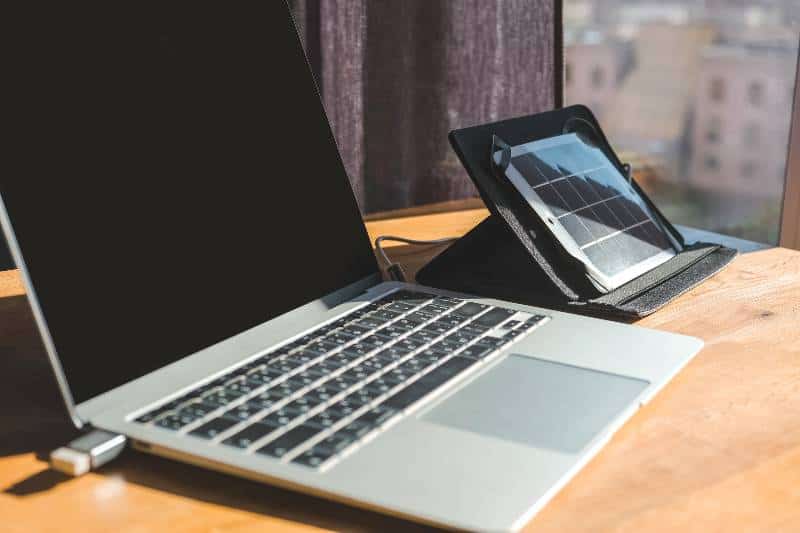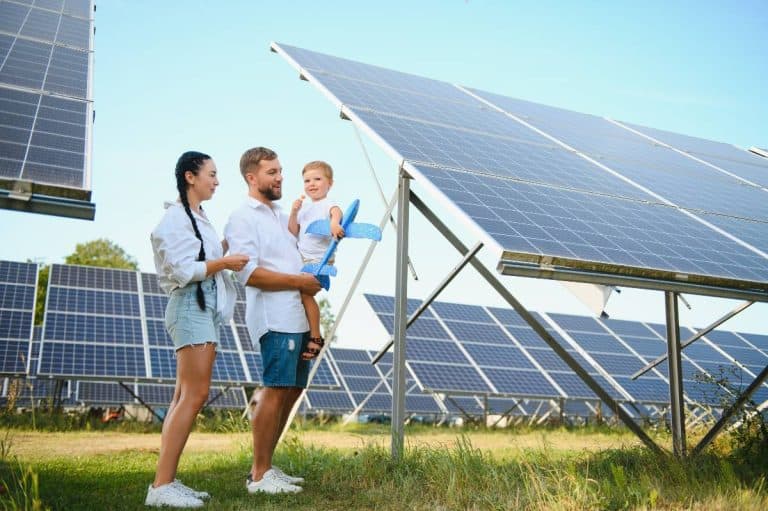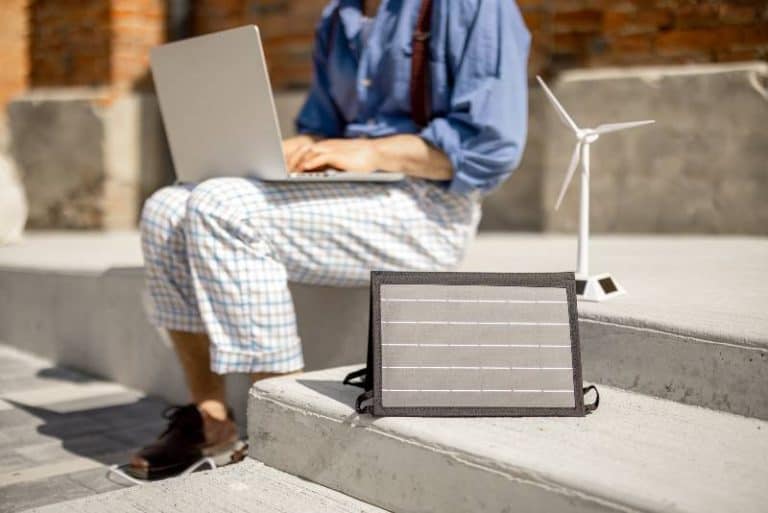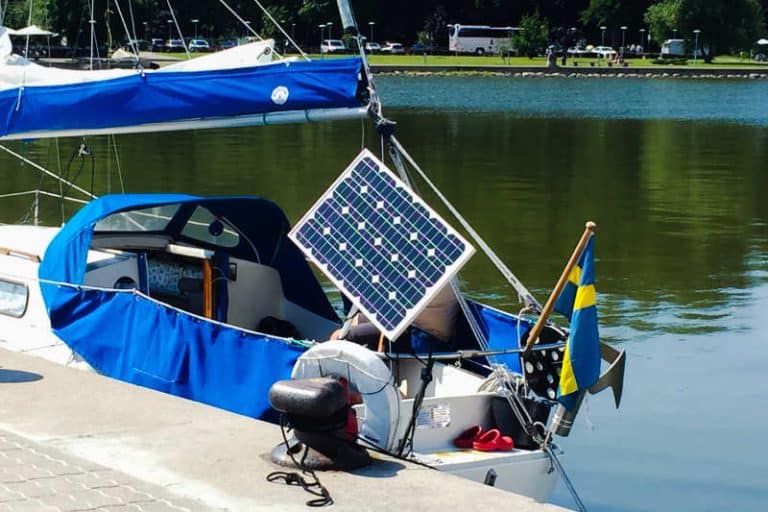Portable Power: The Best Solar Panels for Efficiency on the Go
If you’re looking for an efficient way to power anything from camping trips and remote cabins to backyard solar projects, many portable solar panels are a great alternative option. With so many models available on the market today, it can be difficult to know which one is best for your needs. In this post, we’ll break down the best portable solar panel currently available–covering brands like Goal Zero, Renogy, and more–so you can easily find the right system for powering up any off-grid setup or outdoor activity.
The market for portable panels was worth USD 433.8 million last 2018. This growth is being driven by initiatives from organizations like the International Finance Corporation, Global Off-Grid Association, and World Bank to bring energy access to people who don’t have electricity grids.
Key Takeaways
- Top portable solar panels offer high efficiency, making them perfect for various outdoor activities and emergency situations.
- Factors such as material, temperature coefficients, and power station as well as tolerance impact solar panel efficiency, so consider these when choosing a panel.
- To maximize efficiency, ensure proper positioning, regular cleaning, and maintenance of your portable solar panel.
Factors affecting solar panel efficiency
Material and construction
The efficiency of a solar panel is significantly influenced by the type of solar cells used, which can be classified into three: monocrystalline portable solar panels, polycrystalline solar panels, and thin-film solar panels. Monocrystalline solar cells are the most efficient, followed by polycrystalline cells and thin-film cells. It is also worth noting that the quality of materials and techniques used during construction can also affect the solar panel’s efficiency.
Temperature coefficients
Other solar panels need to be operated within a specific temperature range so it’s important to understand the temperature coefficient which measures the decrease in their efficiency as temperature rises. The types of solar cells used also play a role as they each have different temperature coefficients with monocrystalline cells having the best performance, followed by polycrystalline cells and thin-film cells. When it comes to choosing the best solar cells for your application, the temperature coefficient is something you should take into consideration.
Power Tolerance
Solar panel power tolerance is the range of variation in the power output that a panel can produce, expressed as a percentage. A lower power tolerance is better because it means the panel’s actual power output will be closer to its rated capacity, leading to higher efficiency.
When comparing solar panels, it’s important to take into account their power tolerance. This is because a panel with a higher efficiency rating but a wider power tolerance range may not perform better than a panel with a slightly lower efficiency rating but a more narrow power tolerance range.
Top portable solar panels on the market
Jackery SolarSaga 100W Portable Solar Panel
- Brief description and specifications: Foldable solar panels like this are designed for use with the Jackery Explorer portable power stations. It offers a high conversion efficiency of up to 23%.
- Efficiency rating: Up to 23%
- Pros: Lightweight and portable solar power, easy setup, durable, built-in USB ports for direct charging
- Cons: Relatively expensive, compatible mainly with Jackery power stations
- Price range and availability: Around $300 (2023 price), available on various e-commerce platforms
Goal Zero Nomad 50 Solar Panel
- Brief description and specifications: A lightweight and foldable solar panel with a 50W output, designed to charge portable power stations and USB devices.
- Efficiency rating: Not explicitly mentioned, but reviews suggest it is efficient for its size
- Pros: Compact and portable, easy setup, built-in USB ports, compatible with various power stations
- Cons: Expensive for its wattage, lower wattage compared to other options
- Price range and availability: Around $100 (2023 price), available on various e-commerce platforms
Renogy 100 Watt 12 Volt Monocrystalline Off-Grid Portable Foldable Solar Panel
- Brief description and specifications: A 100W foldable solar panel with a built-in kickstand, designed for off-grid applications and charging 12V batteries.
- Efficiency rating: Up to 21%
- Pros: Durable, weather-resistant, versatile use, the high conversion efficiency
- Cons: Heavier compared to other portable solar panels, no built-in USB ports
- Price range and availability: Around $230 (2023 price), available on various e-commerce platforms
- Brief description and specifications: A compact, foldable 21W solar panel designed for charging smartphones and USB devices directly.
- Efficiency rating: Up to 21.5%-23.5%
- Pros: Lightweight and portable, affordable, built-in USB ports, durable
- Cons: Limited to USB charging, lower wattage compared to other options
- Price range and availability: Around $70 (2021 price), available on various e-commerce platforms
Please kindly note that the prices and availability of the product are subject to change over time, so it’s advisable to always check the latest information before deciding to make a purchase. This way, you can enjoy a stress-free shopping experience without the worry of any unanticipated changes to the product’s cost or availability.
One valuable piece of advice I would like to share with you: take some time to read this comprehensive article that elaborates on how the installation of solar panels in your home has the potential to mitigate and combat the negative impacts of inflation on your budget.
How to choose the right portable solar panel
Assessing individual needs
When it comes to choosing the right portable solar panel, it’s important to first assess your individual needs. Are you looking for something lightweight and easy to carry on a camping trip? Or perhaps you need a more heavy-duty option for powering a mobile office setup. Take into account how much power you will need and for what devices.
Additionally, consider the size and weight of the panel as well as its durability and ease of use. By evaluating your specific needs, you can make an informed decision about which portable solar panel is right for you. And with so many innovative and reliable options on the market today, you’re sure to find one that fits your unique requirements.
Comparing features and efficiency
When it comes to choosing the right portable solar panel, there are a few key aspects to consider. Comparing features and efficiency can help you determine which option is best for your needs. First, consider the power output of each panel – this will determine how quickly it can charge your devices.
Additionally, look for panels that are durable and weather-resistant, as they’ll be exposed to the elements while you’re on the move. You’ll also want to consider the size and weight of the panel, as it needs to be portable enough to carry with you. Lastly, take a look at the efficiency rating, which indicates how much of the sun’s energy the panel can convert into usable electricity.
Budget considerations
Choosing the right portable solar panel can be a daunting task, especially if you’re not familiar with the technicalities involved. However, there are some important factors to consider that can make your decision a lot easier. One of these considerations is your budget. Portable solar panels come in various sizes, designs, and power outputs, all of which contribute to the final cost.
It’s important to set a budget beforehand and figure out what you can realistically afford. But don’t let a tight budget discourage you, as there are budget-friendly options that can still meet your needs. With a little research and a clear understanding of your budget, you can find the right portable solar panel that balances affordability with performance.
Tips for maximizing solar panel efficiency
Proper positioning
Proper positioning is crucial to maximizing solar panel efficiency. The main objective is to optimize energy production by ensuring that the solar panels receive the most sunlight possible throughout the day. Here are some tips for proper positioning:
- Angle and direction: Try to position the solar panel in a way that gets the most sunlight by angling it. In the Northern Hemisphere, it’s best to face the solar panel towards the south, while in the Southern Hemisphere, it’s best to face it towards the north. For best results, set the tilt angle to match your latitude. This is a general guideline, but further adjustments may be necessary for different seasons.
- Avoid shading: Make sure nothing blocks your solar panel, like trees, buildings, or other objects that can create shadows on the panel during the day. Even slight shading can lower the panel’s efficiency by a significant amount.
Cleaning and maintenance
Regular cleaning and maintenance are essential to keep your solar panels operating efficiently and prolong their lifespan. Over time, dirt, dust, and debris can accumulate on the panel’s surface, reducing its ability to generate power. To maintain peak performance, follow these cleaning and maintenance tips:
- To ensure proper functioning, it is recommended that you examine your solar panels every few months for dirt accumulation, harm, or shading problems. This will assist you in detecting and resolving any possible issues as soon as possible.
- To clean the panels, use a soft cloth or non-abrasive sponge with water or mild cleaning solution. Do not use harsh chemicals, abrasive materials, or pressure washers since they can harm the panel’s surface.
- To reduce the chance of thermal stress on the panels, it is recommended to schedule cleaning for cooler times of the day such as early morning or late afternoon.
- If your solar panels are installed on a roof or in a place that is hard to reach, it’s recommended to hire a professional cleaning service. This will ensure safety and proper cleaning techniques are used
- .Monitor the performance of your solar panels to detect any signs of reduced efficiency. This can help you determine when additional maintenance or repairs may be required.
Storing and transporting
To ensure that your solar panels work efficiently and last longer, it is important to clean and maintain them regularly. Dirt, dust, and debris can build up on the panels over time, diminishing their power-generating capacity. To keep your panels performing at their best, follow these maintenance and cleaning suggestions:
- It is advisable to examine your solar panels frequently, preferably every few months, to detect any accumulation of dirt, harm, or shading concerns. This will aid in the early detection and resolution of any potential issues.
- To clean the panels, use a soft cloth or non-abrasive sponge with water or a mild cleaning solution. Make sure to avoid harsh chemicals, abrasive materials, or pressure washers, as they may harm the panel’s surface.
- To avoid thermal stress on the panels, it is recommended to schedule cleaning during cooler times of the day, specifically early morning or late afternoon.
- If your solar panels are installed on a roof or a high place that is hard to reach, it’s better to hire a professional cleaning service to make sure the job is done safely and using the correct cleaning methods.
- It is important to keep track of how well your solar panels are working so you can identify any decrease in their efficiency. This will allow you to figure out when you might need to perform maintenance or repairs.
The Most Efficient Portable Solar Panels on the Market FAQs
What is the price range for the most efficient portable solar panels?
The price range for the most efficient portable solar panels varies significantly depending on factors such as power output, size, and materials. As of 2021, prices typically ranged from $100 to $500, but these figures may have changed since then. It is important to research current market prices and compare product features to find the best value for your needs.
Are there any disadvantages to using high-efficiency solar panels?
Although high-efficiency solar panels have many benefits, they also have drawbacks. These panels are often more expensive due to the advanced technology and materials used, making the initial expense more significant. In addition, high-efficiency panels are less tolerant of shading, which can reduce their performance in certain environments or circumstances. Lastly, their small size may necessitate more complex installation, leading to additional labor costs.
How can I maximize the efficiency of my portable solar panel?
For better performance from your portable solar panel, it’s important to position it correctly for maximum sunlight exposure and minimal shading. Keep the panel surface clean by regularly removing dust and debris, which can reduce light absorption. Use a solar charge controller to optimize energy storage and prevent battery overcharging. If you need more energy or want better performance, consider upgrading to a more efficient panel.
Can I use multiple portable solar panels to increase my overall efficiency?
Yes, using multiple portable solar panels can increase your overall efficiency by providing more power to meet your energy demands. Connecting panels in parallel maintains the same voltage while increasing the current, allowing for faster charging and more consistent energy generation. Be sure to use compatible panels, connectors, and a charge controller to manage power output and protect your system from potential damage.
Are high-efficiency portable solar panels compatible with various devices?
Portable solar panels that are highly efficient usually have USB ports and adapters for multiple electronic devices. However, it’s important to check the solar panel’s power output and the power requirements of the device to make sure they are compatible for efficient charging. Check both the solar panel’s specifications and the device’s charging requirements.
Conclusion
To make the most out of your portable solar panel during outdoor activities or emergencies, it is important to consider and improve its efficiency. This involves understanding how the materials used, temperature coefficients, and power tolerance can affect its performance. By addressing these factors, you can ensure that your portable solar panel functions optimally.
With proper positioning, regular cleaning and maintenance, as well as the right knowledge of what to look for when buying one, you can successfully get the most out of your portable solar panel. To stay up-to-date with information like this about all things solar-powered and sustainable, sign-up for our newsletter today! Together, we can continue expanding our knowledge and pooling our collective expertise in order to find creative solutions for our energy needs.






